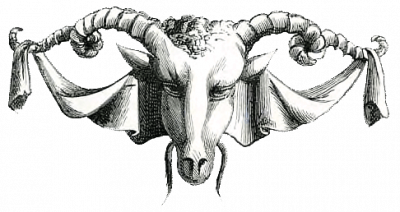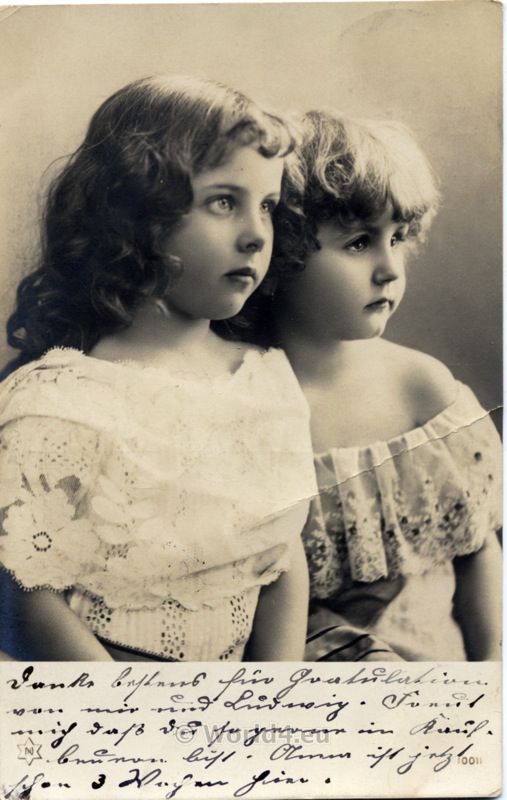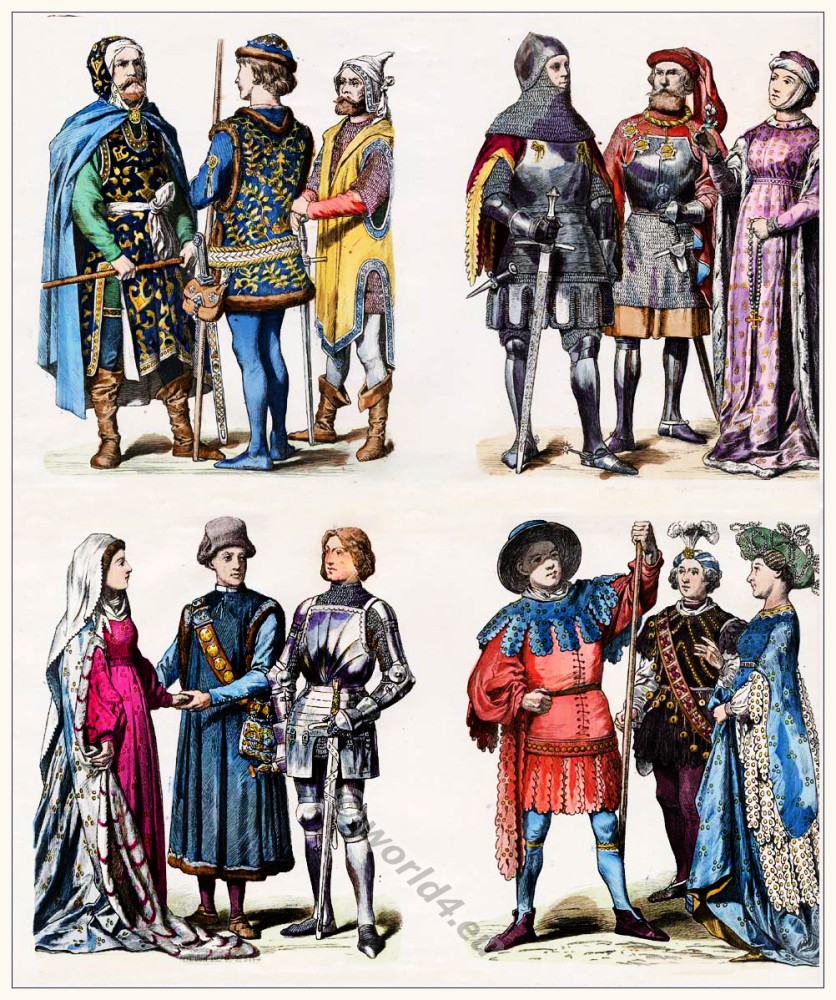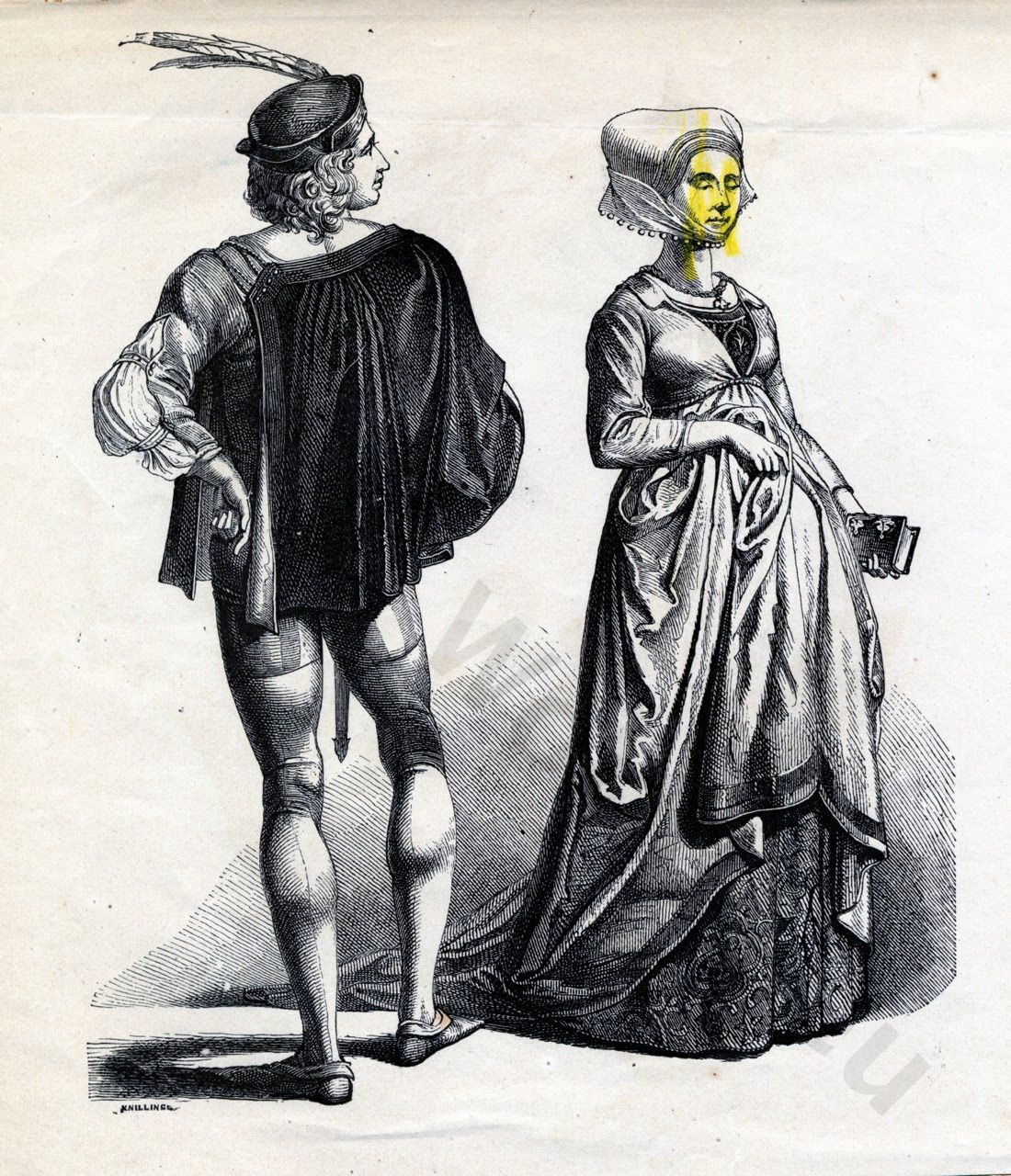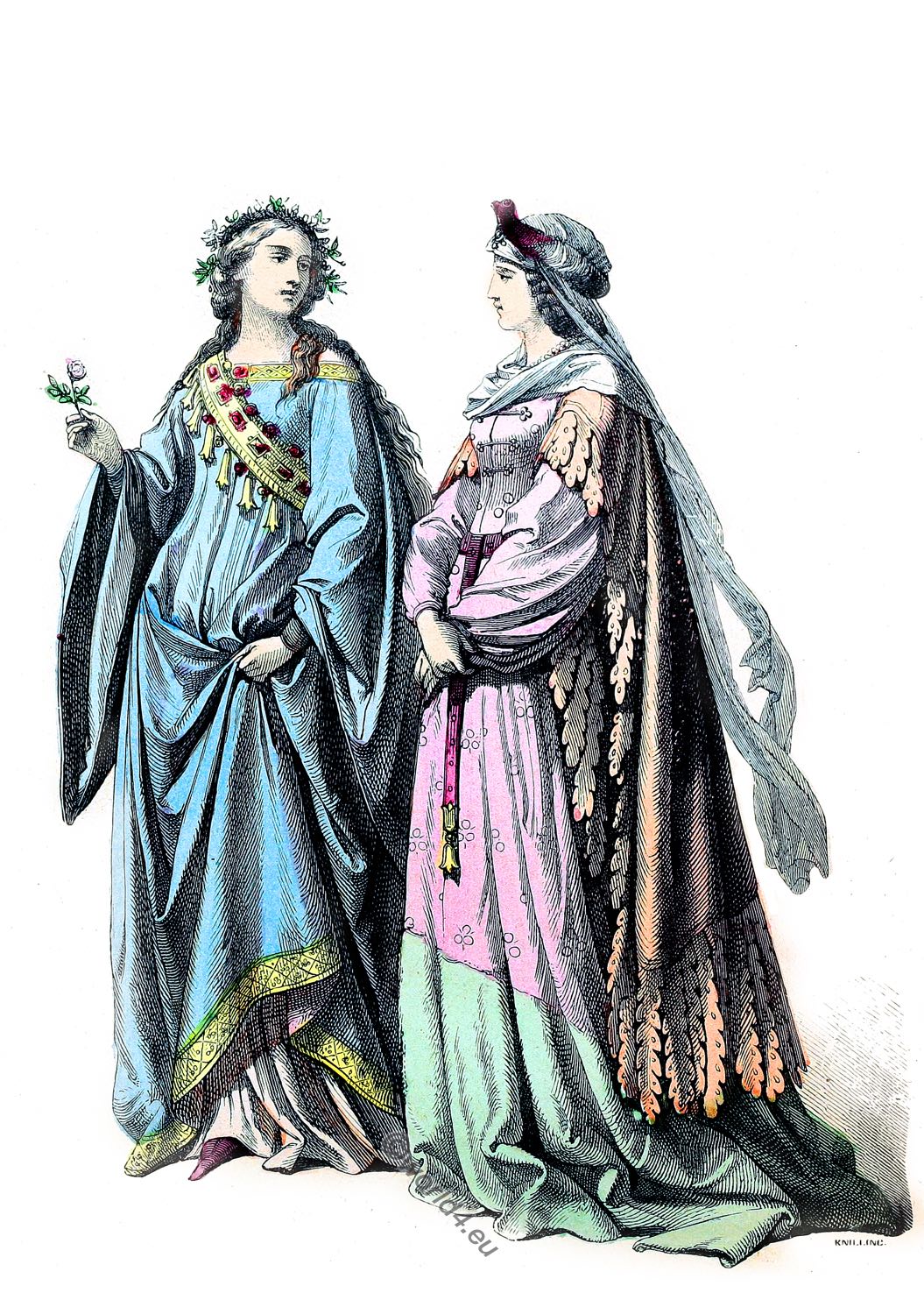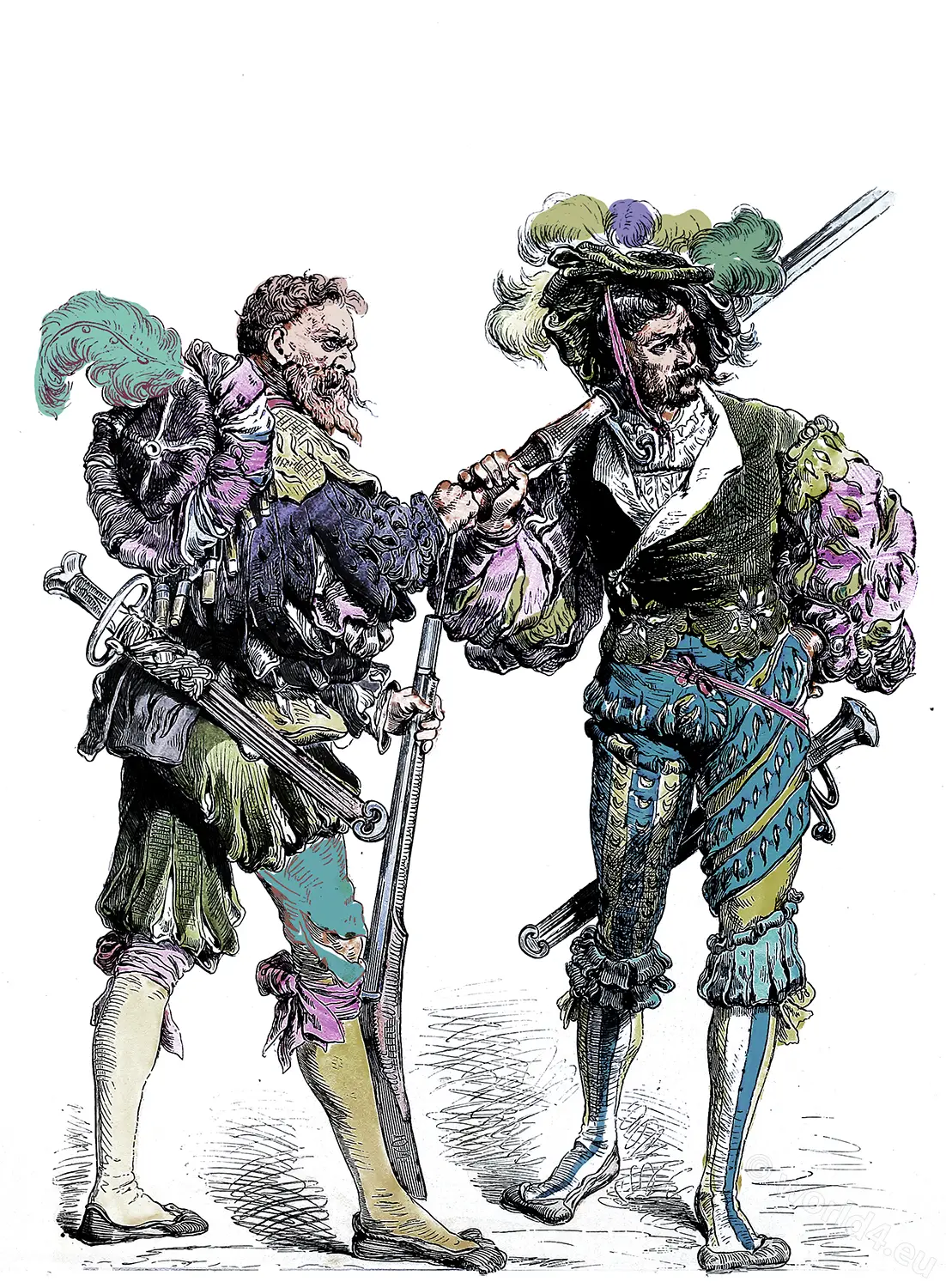
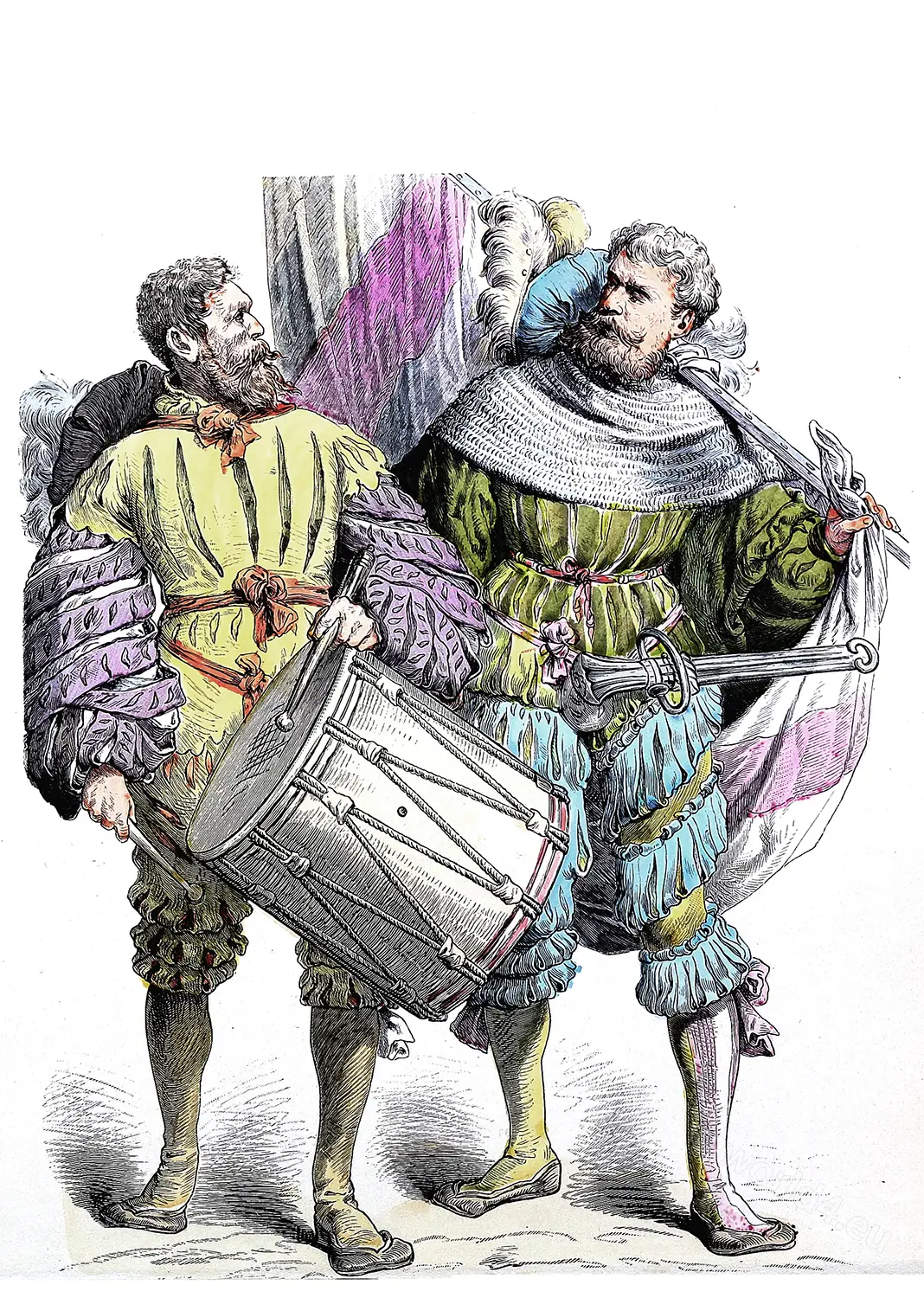
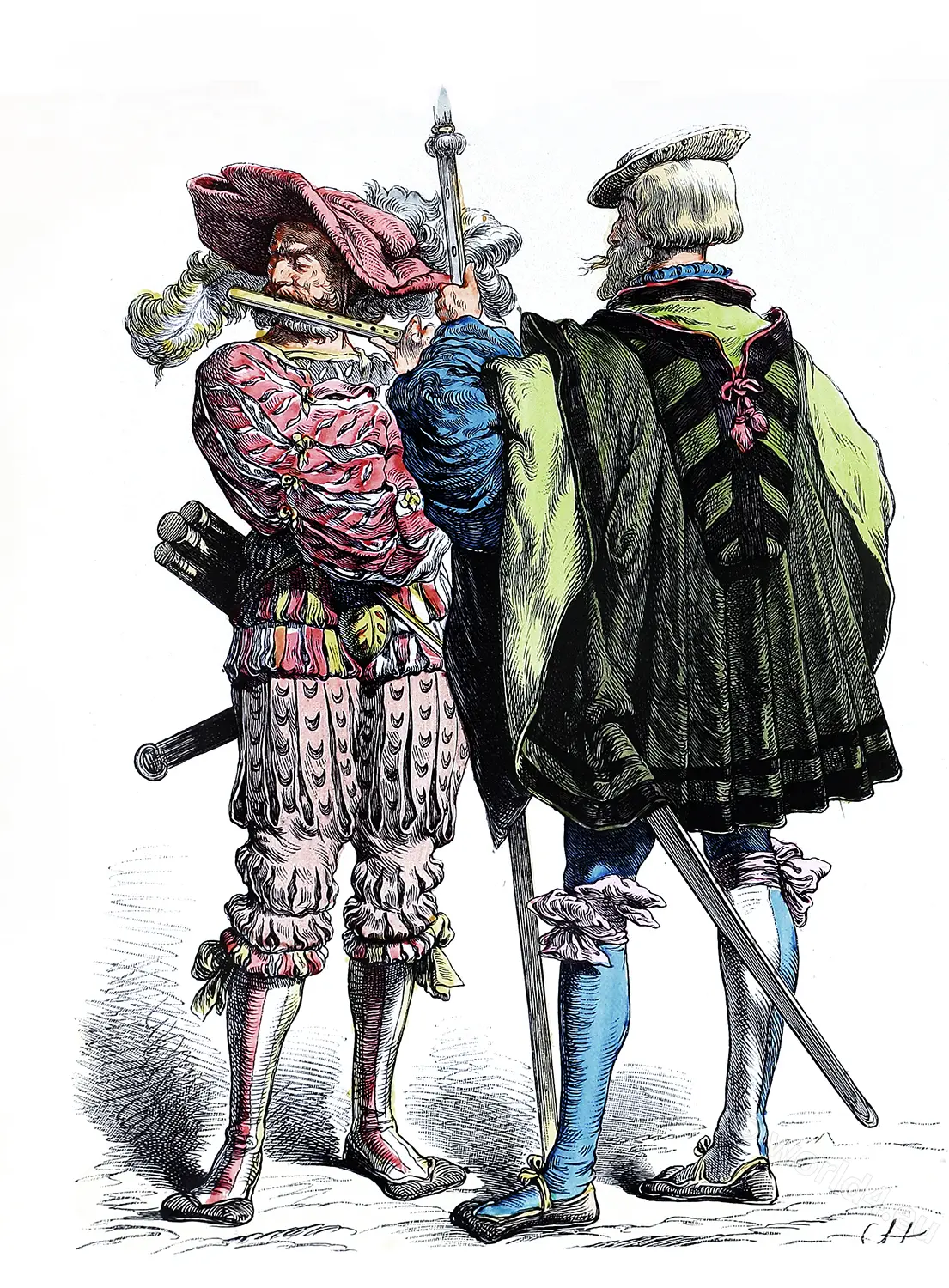
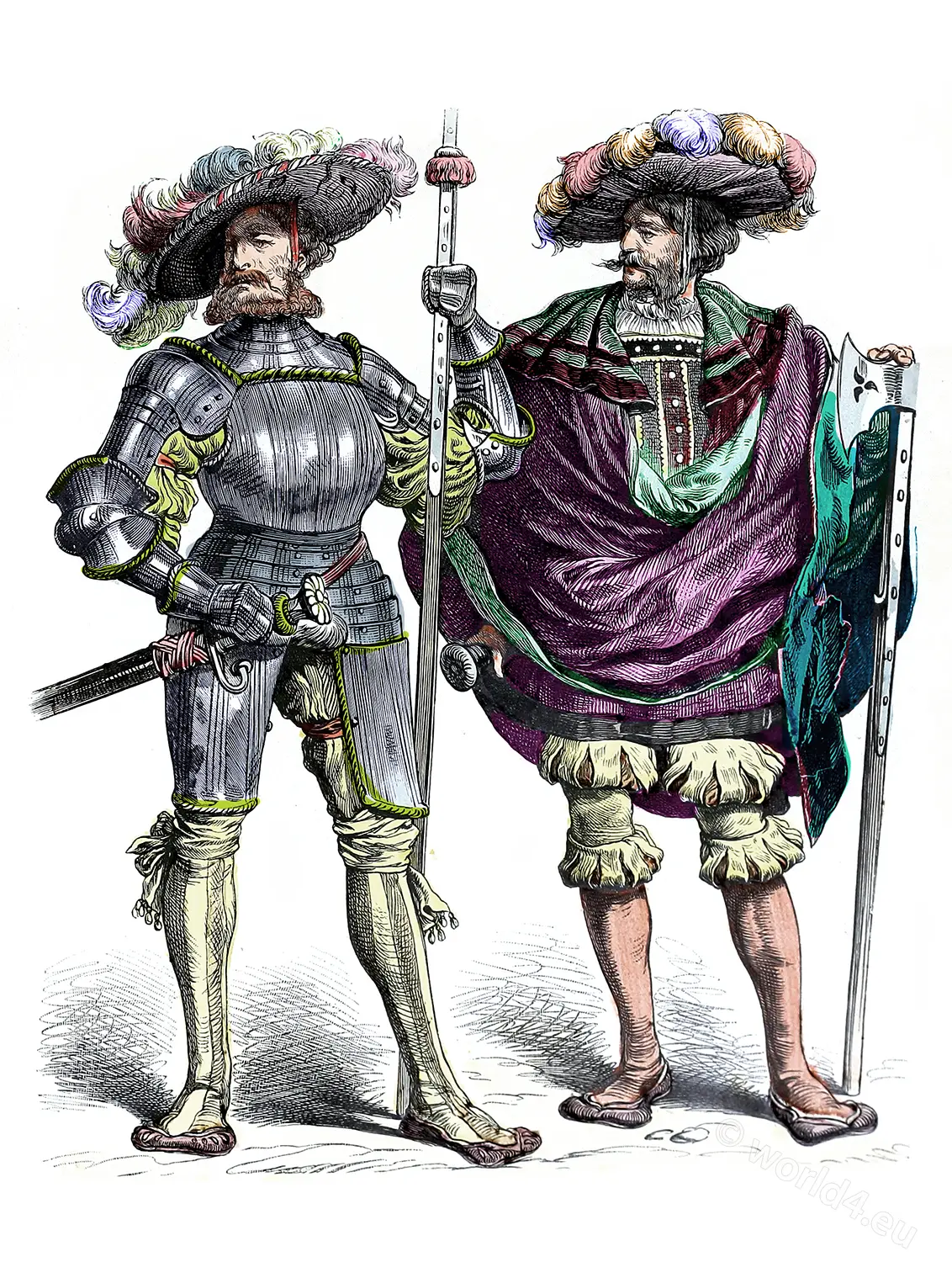
German lansquenets.
First quarter of the XVI. Century.
Top row left: Lansquenets. Right: Drummers and flag bearers.
Bottom row left: Piper, Waibel. Right: Captain and Lieutenant.
As a mercenary or lansquenet is defined as the fighting on foot, mostly German mercenaries of the late 15th and 16th centuries, its primary weapon after the Swiss model of mercenaries was the Pike. They were considered especially powerful because of their progressive and disciplined fighting style.
Lansquenets have been called mercenaries on foot since the last quarter of the 15th century until the 17th century; the name originated on the one hand because a royal charter (Worms 1495) expressly decreed that mercenaries were to be recruited from the landscapes in the empire, on the other hand in contrast to the Swiss, whose enmity with the Lansquenets was proverbial.
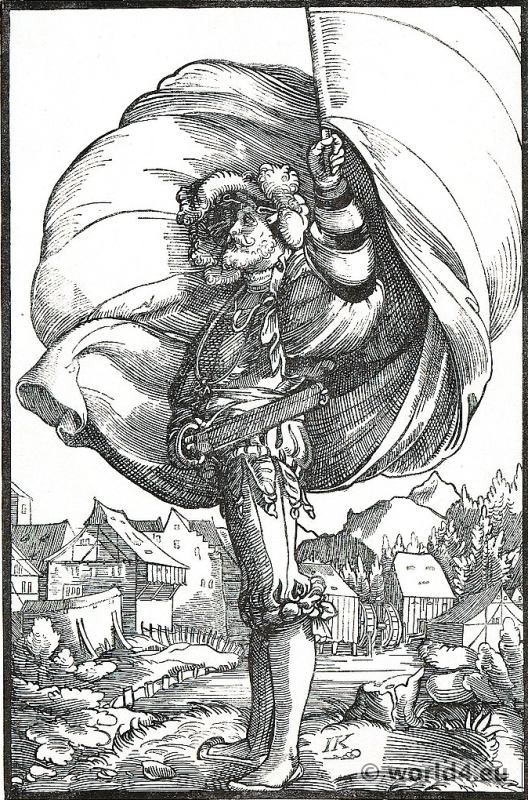
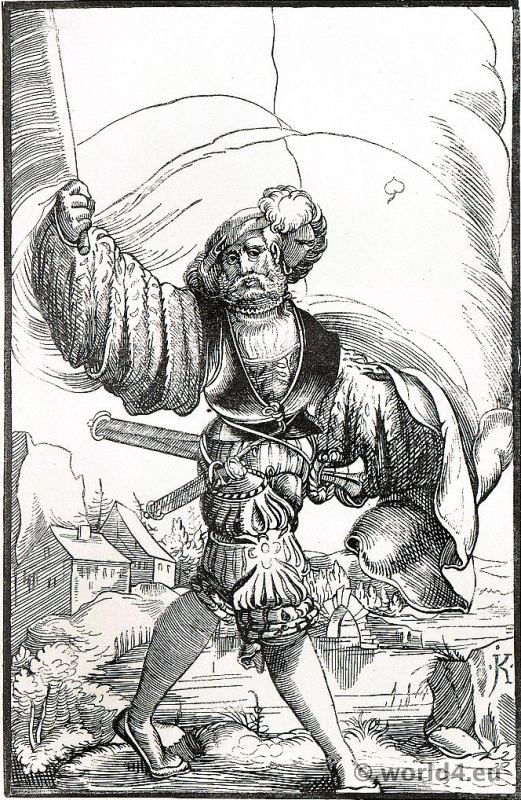
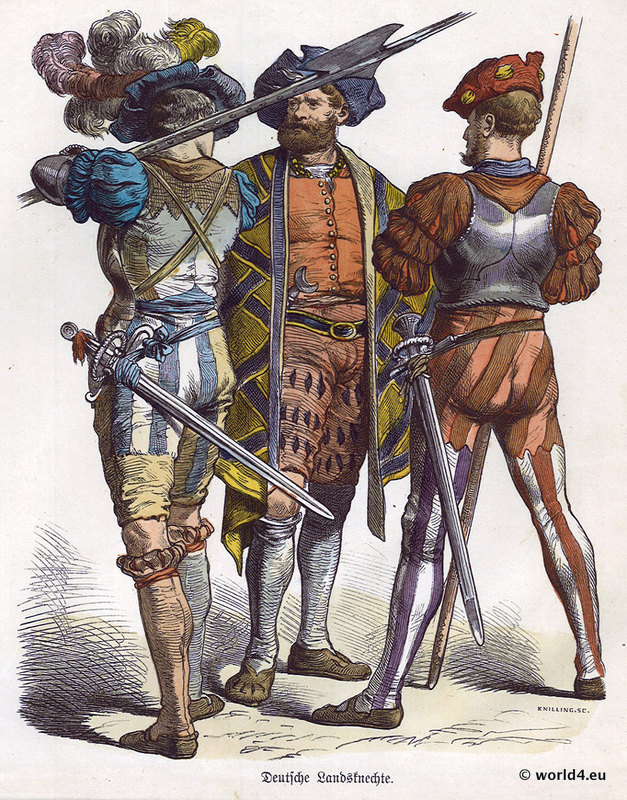
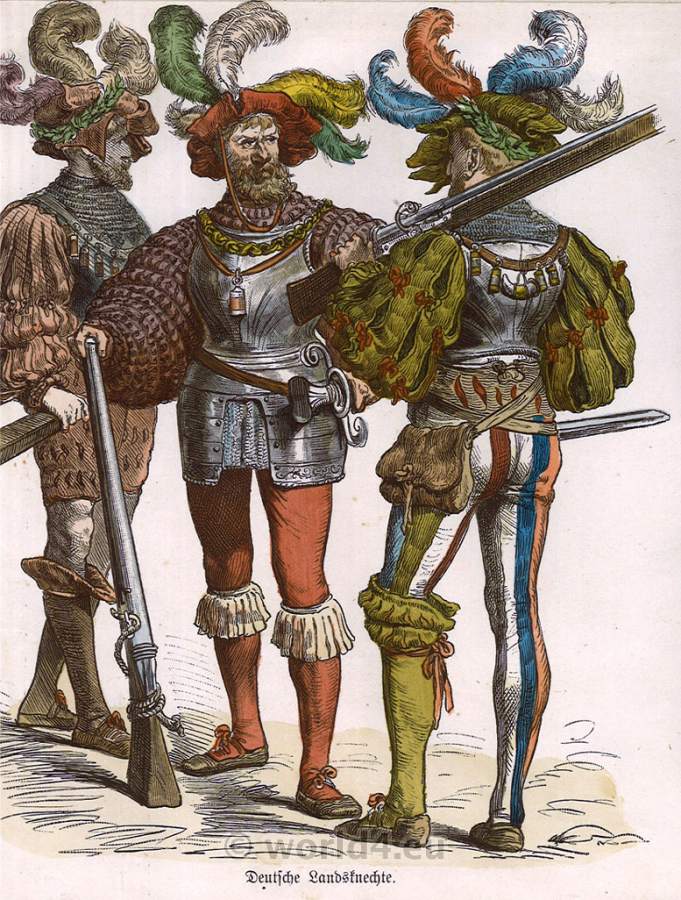
The Lansquenets were armed with spears or batons, dressed in the beginning according to the purpose, colorful but flexible and tight, later with the degeneration of the customs highly pompous, so that the clergy appeared from the pulpit against the “trouser devil”.
Machiavelli refers to an important fact in his description. The lansquenets renounced complete armour for field combat; only breast and back armour or a helmet were preferred. This was a consequence of the increased mobility in field combat. Lansquenet armour featured open balaclavas, underarm collars, simple chest and back panels and leg pockets that were pushed several times.
In the middle of the 17th century the transition from mercenary armies to standing armies began in many European countries. This also brought about a significant change in armament and equipment. The armour came completely out of use.
Source: “On the history of costumes”. Münchener Bilderbogen (Munich pictures sheets). Published by Braun & Schneider, Munich c.1858 -1898s.
